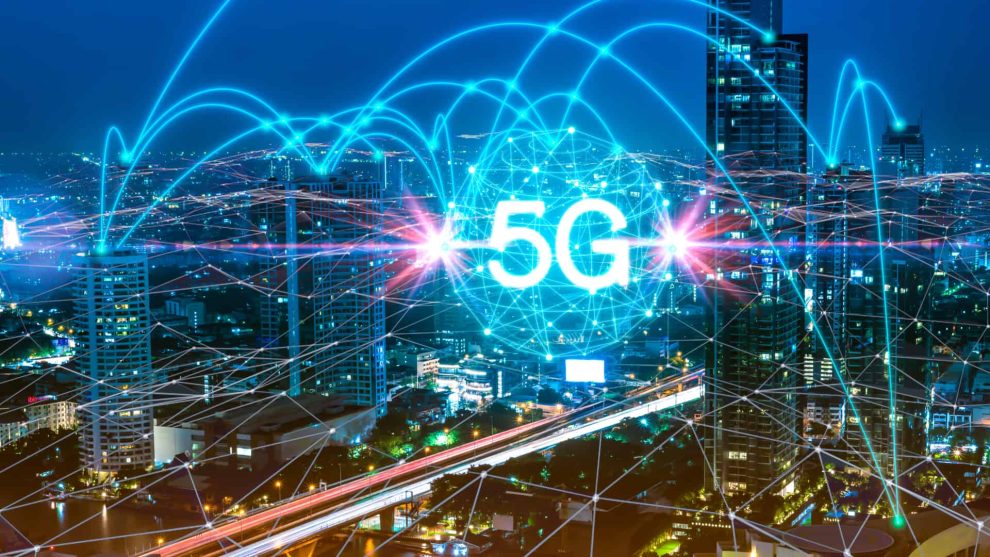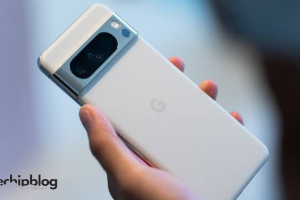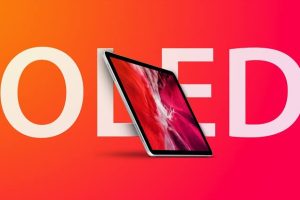The rollout of 5G networks and devices has captured public fascination for years. The promise of radical increases in speed, responsiveness, and connectivity have painted a picture of a transformative, hyper-connected future. But how much of this 5G dream has translated into reality so far? And where exactly do 5G-enabled smartphones fit into making this future achievable?
In this in-depth guide, we’ll explore real-world 5G performance, availability, use cases, and how the latest 5G phones like the iPhone 12, Galaxy S21, and others serve as gateways to usher in faster speeds, lower latency, and expanded capacity compared to 4G networks.[1]
The 5G Speed Revolution: Impressive but Uneven Gains So Far

One of the most touted advantages of 5G networks is faster speeds. 5G promises theoretical download speeds exceeding 10 Gbps – an enormous leap from 4G LTE’s peak capabilities. So how much of this speed potential has translated into the real world so far?
Early 5G Speeds: Impressive Peak Gains But Results Vary
While average download speeds on 5G networks clock in well below the touted gigabit per second figures so far, current median speeds have already hit impressive highs of over 400 Mbps in some regions. For comparison, average 4G LTE speeds for most users hover between 20-40 Mbps globally. So even at current levels, 5G delivers a very tangible boost for data-hungry mobile activities.
However, these median figures don’t reveal the full story. While peak 5G download speeds have exceeded 4 Gbps in some tests, real-world results can vary tremendously based on location, network technology deployed, spectrum bands utilized, and other factors. In essence, your individual experience depends heavily on your local network conditions and device capabilities.[2]
Why the Gap Between Theoretical and Actual Speeds?
So why does real-world 5G speed often fall so far short of what those dazzling theoretical peak rates seem to promise? There are a few crucial reasons behind this phenomenon:
- Infrastructure limitations: Building sufficient cell sites and core infrastructure to deliver très fast speeds everywhere requires massive investments and takes time, even for carriers deploying rapidly.
- Spectrum availability: The incredibly high speeds 5G enables rely on tapping into wide swaths of high-frequency mmWave spectrum. But availability remains limited in many areas so far.
- Lack of standalone networking: Many carriers currently use non-standalone 5G networks that rely partially on existing 4G LTE infrastructure, limiting speed potential.
- Device capabilities and settings: The maximum speeds a 5G smartphone like the Galaxy S21 can reach depends heavily on supported spectrum bands, number of antennas, and user settings like preferring battery life over peak performance.
- Congestion: Like any network technology, contending with bottlenecks from increasing numbers of users and devices can hamper maximum speeds.
The Bottom Line: Blazing Fast Downloads Already Possible – But Gaps Endure
In essence, while 5G brings very tangible speed improvements in many areas already, reliably achieving those peak gigabit download rates for most users remains an ongoing pursuit. Still, the upgrades are dramatic enough for users in many regions to enjoy blazing fast downloads, smooth 4K or 8K video streaming, and lag-free mobile gaming.[3]
But the gaps between hype and reality also serve as an important reminder to keep expectations realistic. Performance can vary drastically depending on your location, carrier network utilization, tower proximity, foliage blocking signals indoors, and other factors. Understanding your local network conditions is crucial to setting proper speed benchmarks.
Where Can You Get 5G Service Today?
Blazing fast 5G mobile internet looks great on paper. But all those fancy advertised peak download rates don’t mean much if you can’t actually access 5G networks in your area. So what’s the current landscape for 5G availability? Let’s dig into coverage expansion plans and technology deployment models to understand the lay of the land.
5G Coverage Expansion Accelerating Globally
The rollout of commercial 5G networks first began in 2019, and is rapidly expanding its reach according to carriers’ ongoing deployment plans. In countries like China, South Korea, The U.S., and Western Europe, coverage already spans many metro areas today.[4]
However, large gaps in rural areas endure nearly everywhere. Developing countries also generally lag further behind in infrastructure buildouts. So beware of sweeping claims that “5G is now available most everywhere” – there’s still a long path ahead for achieving truly ubiquitous connectivity.
Mid-Band and mmWave: Understanding 5G Spectrum Bands and Tradeoffs
It’s also crucial to understand that carriers around the globe are deploying a mix of 5G spectrum bands, each with their own pros and cons related to speed potential versus signal propagation and building penetration characteristics. These include:
- Low-band: Offers wide area coverage but limited speeds due to narrow bandwidth.
- Mid-band: Balances faster speeds with decent coverage, becoming the workhorse for many 5G rollouts.
- High-band mmWave: Enables ultra-fast speeds over a gigabit per second but struggles with obstacles and long range.
So checking which spectrum bands your carrier utilizes locally makes a major difference in setting realistic speed expectations. For example, catching those blazing multi-gigabit peaks relies on tapping into mmWave signals, but its finicky propagation means your location matters tremendously.[5]
The Availability Outlook Going Forward
While sizable gaps remain today, network expansion efforts continue to accelerate globally. Most carriers aim to achieve majority population coverage over the next 2-3 years in developed countries. However, closing remaining gaps in rural areas will likely take considerably longer in many markets.
The bottom line: 5G coverage continues spreading at a rapid clip. But understanding your carrier’s local deployment plans and spectrum utilization remains essential to gauge where your area fits into ongoing expansion efforts.
Beyond Sheer Speed: The Wider Implications of 5G Capabilities
There’s no doubt: one of the biggest allures surrounding 5G networks is the prospect of mobile downloads at warp speed. But are blazing fast video streaming and software downloads the end goal, or just a means to a greater end?
In reality, much of the transformational potential of 5G actually lies in enabling capabilities beyond sheer bandwidth – namely, in drastically reduced network response times (low latency) and support for an exponential jump in number of connected devices via expanded capacity.
These additional capabilities serve as the foundation to unlock innovative new use cases across a variety of mobile sectors. As deployment continues to scale globally, let’s explore some of these promising new frontiers 5G connectivity helps enable.
Enhanced Mobile Broadband (eMBB): Turbocharged Smartphones
This is the classic consumer-facing 5G benefit centered on delivering drastically faster mobile data rates we’ve touched on already. We’re talking lightning fast downloads for streaming movies in minutes instead of hours, video calls and conferencing without delay or pixelation, and lag-free online gaming.
These enhanced mobile experiences rely on tapping into the vastly expanded data bandwidth 5G offers by utilizing wider blocks of wireless spectrum compared to 4G. While there’s still room for improvement, even today’s real-world 5G speeds already enable these transformative smartphone use cases for millions of users.
Ultra-Reliable Low Latency (URLLC): The Foundation for Mission-Critical Apps
Beyond delivering blazing fast speeds, one of 5G’s most crucial differentiators over older network standards lies in slashing network response times – namely, enabling near instantaneous communication dubbed low latency. We’re talking less than 5 milliseconds of lag versus roughly 50 milliseconds on 4G networks.[6]
Why does this matter? By enabling near-real time responsiveness, 5G paves the way for widespread adoption of transformative and even live-saving use cases relying on seamless human-machine coordination – from self-driving vehicles to multi-player mobile gaming to remote robotic surgery.
Massive Machine-Type Communications (mMTC): Connecting Billions of Devices
Along with faster speeds and ultra-low latency, 5G networks’ expanded capacity via utilizing wider chunks of spectrum helps multiply the number of devices that can be connected simultaneously by over 100x compared to 4G. [7]
This sets the stage for the massive Internet of Things (IoT) revolution on the horizon – enabling advanced smart city applications through billions of connected sensors, wearables with wide-ranging health tracking capabilities, smart home devices that can self-coordinate energy usage, and much more.
The Bottom Line: Unlocking a World of Connected Applications
While supercharging mobile broadband with ultra-fast data rates grabs headlines today, 5G’s true value lies in enabling this new category of innovative applications requiring instant response times, seamless machine-to-machine coordination, and supporting mass scale device networks.
As carriers continue deploying 5G infrastructure globally, its capabilities serve as connective tissue that ties together advancements across sectors like autonomous transportation, telemedicine, industrial automation, augmented reality, and more into the world of tomorrow.
5G Smartphones Serve as Gateways to the Connected Future
As we’ve explored, 5G networks bring not just fast downloads but also tremendous potential to transform entire industries. But to tap into these next-generation mobile capabilities yourself, having a compatible device is key – namely, a 5G-enabled smartphone.
Luckily, major players like Apple, Samsung, Google, Xiaomi, Motorola and more now offer affordable 5G device options spanning different price tiers. Let’s explore some top considerations when choosing one of the latest 5G phones tailor-made to serve as your passport to the hyper-connected applications of the future.
OS Ecosystems: iOS vs Android in the 5G Era
Just like with 4G phones, choosing between operating systems remains an important decision in the 5G smartphone era. Android phones like the Galaxy S21 allow for more customization and flexibility, while Apple’s iPhone 12 offers tighter hardware and software integration (at the expense of restrictiveness).
The good news is that both platforms now offer advanced and affordable 5G-compatible options spanning different prices tiers. So picking your preferred OS environment remains a solid starting point to narrow down options.
Network Compatibility & Supported Spectrum Bands
One of the most crucial steps to finding the right 5G phone lies in network compatibility – namely, ensuring any device you choose supports the specific 5G bands and underlying 4G LTE bands utilized by your carrier locally. Since networks can vary drastically between regions and even cities, researching these specifics in advance is essential.
For example, Verizon currently relies heavily on high-band millimeter wave (mmWave) spectrum for its 5G deployments, while T-Mobile focuses more on mid-band. So Verizon customers need to ensure any 5G device they choose includes mmWave support to maximize speeds.
Processing Power, Battery & Added Features
Of course, factors like processing power, battery life, screen quality and added features like multiple cameras remain important just like with 4G phones. Qualcomm’s latest Snapdragon 8 Gen 1 chipset powers many new Android flagships, while Apple’s A15 Bionic does the same for the iPhone 13 lineup.
The bottom line: Understanding your usage patterns and must-have features remains crucial – but so does checking for compatibility with your local network’s specifics. Resources like WhistleOut’s phone finder help cut through the complexity.
The Road Ahead: Widespread 5G Availability Still a Journey
There’s no doubt – 5G-enabled smartphones serve as gateways to tap into the radical upgrades in mobile speed, responsiveness, and connectivity 5G networks provide compared to 4G predecessors. And while the wider implications span far beyond faster Netflix downloads, seeing real-world speed test results first-hand can still generate excitement on an emotional level.
However, it’s also important to acknowledge the uneven global landscape for 5G rollouts currently. As carriers continue deploying equipment across metro and rural areas, many users still find themselves caught between 5G hype and reality. Pinpointing real-world network coverage maps for your carrier, then cross-checking device support specifics remains essential.
The bottom line is that while pockets of 5G-connected transformation pepper some regions today, the network buildout road ahead is still a long one in many areas globally. Nevertheless, the sweeping implications of 5G technology feel destined to touch nearly aspect of commerce and society over the next decade. We’re truly living through the dawn of an era defined by radical gains in mobile speed, responsiveness and expanded capacity.
So while the average user may not notice transformational changes overnight, the 5G-compatible device you carry in your pocket nevertheless serves as a critical gateway to tap into this connected future still unfolding. Where exactly the journey leads next remains thrilling to ponder.













Add Comment